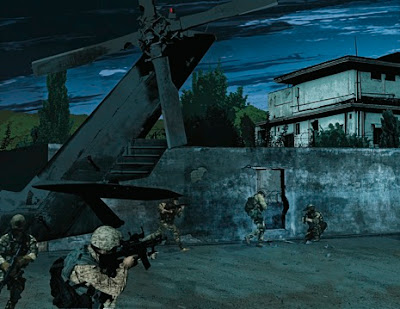article in the New Yorker recently that laid out the details of the mission to capture Bin Laden. One of my students, Pete Thompson, showed it to me while I was teaching him about Project Management and pointed out all the good PM techniques used there. I decided to post about it and do the same for all of you.
Planning: The SEALs trained for months, repeating the steps needed for the raid under all conditions, creating 'memory in the muscle' so that they would be ready for any contingency
Uncertainty: Not knowing what was inside or under the buildings made the project risky. As unknown as any other project. As usual, members of the project team would have to think on their feet and be ready for any obstacles that arose.
Risk: They were unsure that Bin Laden was even in the building when they attacked. Their certainty level ranged from 40 % to 95%. But they knew that waiting longer would likely result in his detection being discovered and the certainty dropping to zero. This is a classic dilemma and best resolved doing exactly what they did. You make a decision based on 80% of the data. If you wait for 100%, you'll never get there and cause massive delays. If you make your decision with less than 80% of the information you need, you'll likely make bad decisions.
Lessons Learned: Carter's disastrous 'rescue' of the Iranian hostages and 'Black Hawk Down' lessons from Somalia gave the team mountains of data on how to create back-up and contingency plans. These all paid off when the first helicopter crashed in the compound. Any worse situations were anticipated by having two back-up teams of helicopters ready to move in from Afghanistan and an unpopulated area of Pakistan.
Stakeholder Analysis: The detailed stakeholder analysis they performed resulted in the decision not to warn the Pakistani 'allies' of their plans. They decided that the risk of Bin Laden being tipped off by this group was too high so they went with secrecy, knowing that there would likely be serious diplomatic repercussions.
Also, when making the decision of burying Bin Laden at sea, they contacted members of the Saudi royalty to see if they would rather take his body. “Your plan sounds like a good one,” the Saudi replied.
Experienced Team Members: Not only were the SEALs in this operation superbly trained, many were veterans of previous rescue operations including the rescue of Richard Phillips, the captain of the Maersk Alabama, from Somali pirates.
Executive Sponsorship: The orders for this operation, from its inception to the 'Go' decision were made at the highest levels of the military: the commander in chief. Obama stayed in touch with the operation all the way through and was ready to take the fall for any failures.
Alternatives Analysis: They decided against blowing up the compound with huge bombs because of the likely collateral damage. Bombs big enough to blow up any bunkers under the compound would be equivalent to a medium size earthquake in the town.
Problems: All projects experience problems and this was no exception. All the practice runs they had done in Nevada used a compound surrounded by a chain link fence. The real compound had thick stone walls that heated up during the day and resulted in a phenomenon known as 'Rotor Wash' downing the first chopper. The team members worked their way around this problem by changing the landing places of the other chopper and taking more time to get to Bin Laden. They had to destroy the stealth parts of the downed chopper but had enough room on the remaining chopper and the rescue choppers to get out. A tough commander on the ground made the call to continue with the mission rather than abandoning it. Good Project Management! Get through the obstacles that appear.
Self Sacrifice: One SEAL wrapped up two of Bin Laden's wives and moved them away from his team in case they were wearing explosive vests. This would allow his team to succeed, even if he died in the process. Few projects have this kind of life-or-death choice inside but often we are faced with the situation of sacrificing a night with the family or a weekend to meet a deadline. Good team members make these tough decisions with the thought: 'The Project Must Win.'
Project Closure: Obama met with the team, down to the dog, thanked them for all their contributions and presented them with gifts that they valued. He never asked who fired the shot that killed Bin Laden, thereby emphasizing that it was a team operation.
All in all, a well-planned and executed project. Well done SEALs and well done to all the people in the government and military involved.

How ironic that Bin Laden's 9/11 terrorists performed enough of the above project management steps to make their attack very successful -- planning, executive sponsorship, uncertainty, risk, experienced team members, problems, and of course self sacrifice. It took time, patience and training to pull it off.
ReplyDeleteAnd it wasn't until we could execute that same level of PM before we could get him.
Nice post.
--Killer Bee
Good point Kevin. But I haven't the heart or the guts to critique the project management skills of the terrorists. Until I saw it was you, I though this comment was coming from one of my Saudi readers.
ReplyDelete